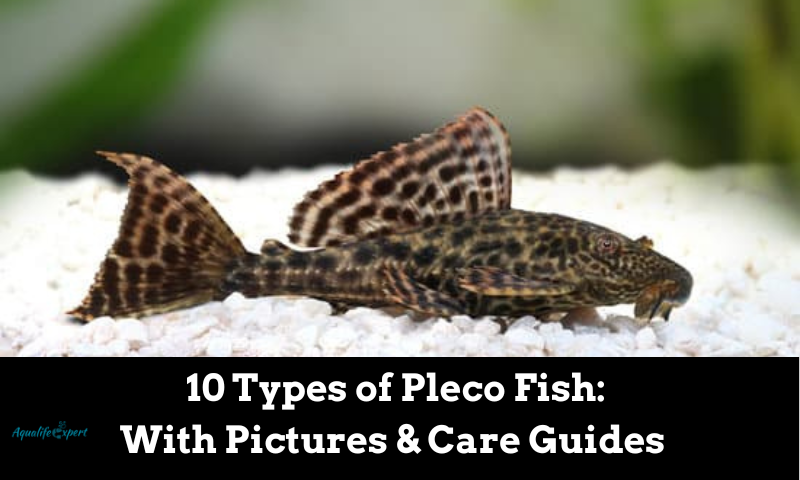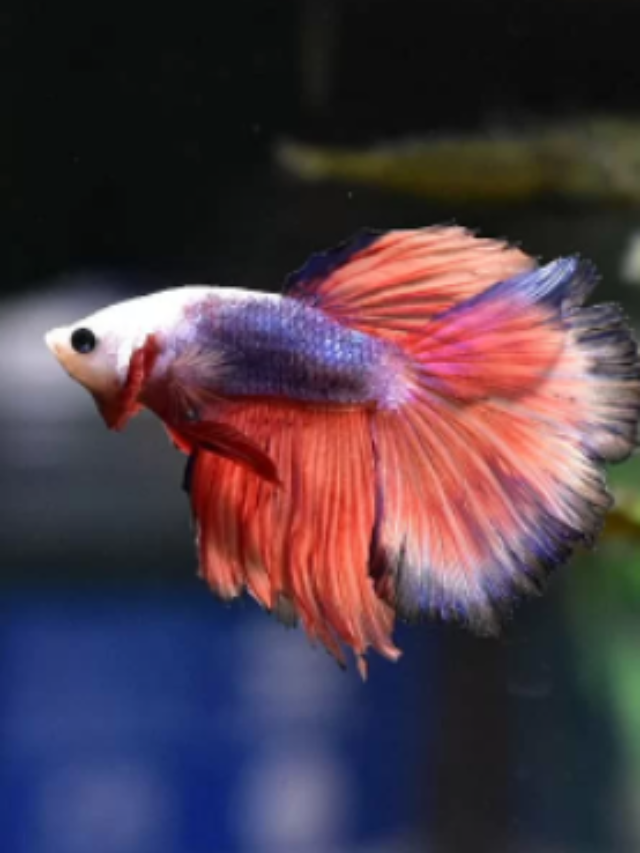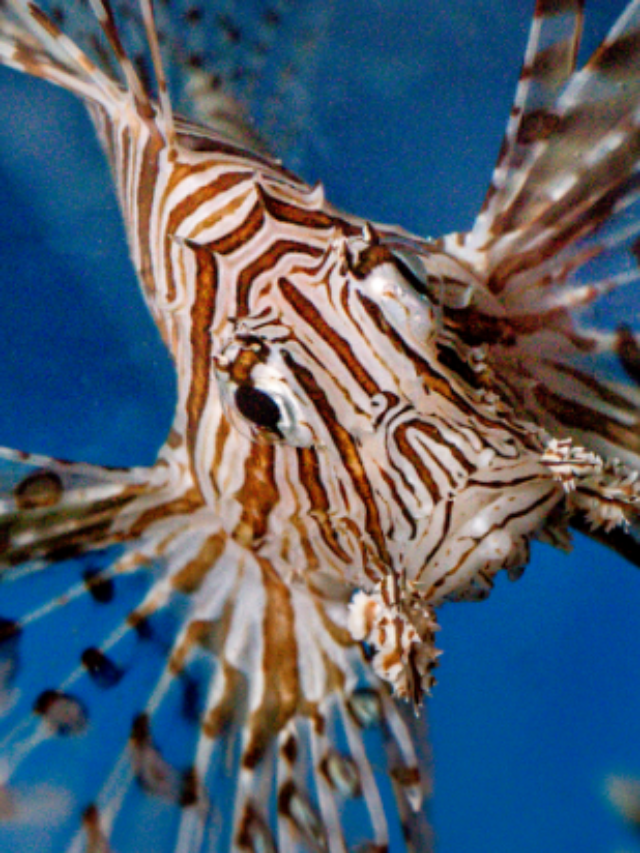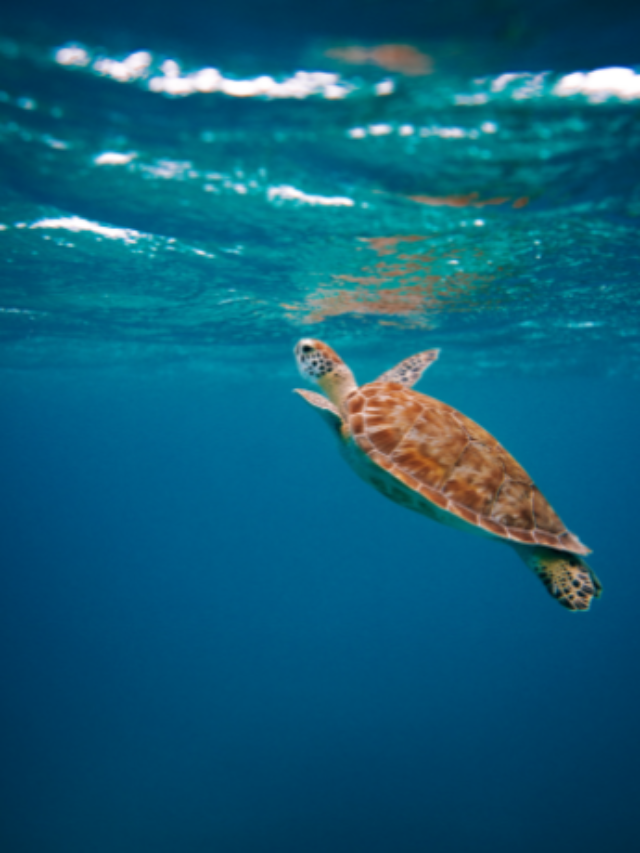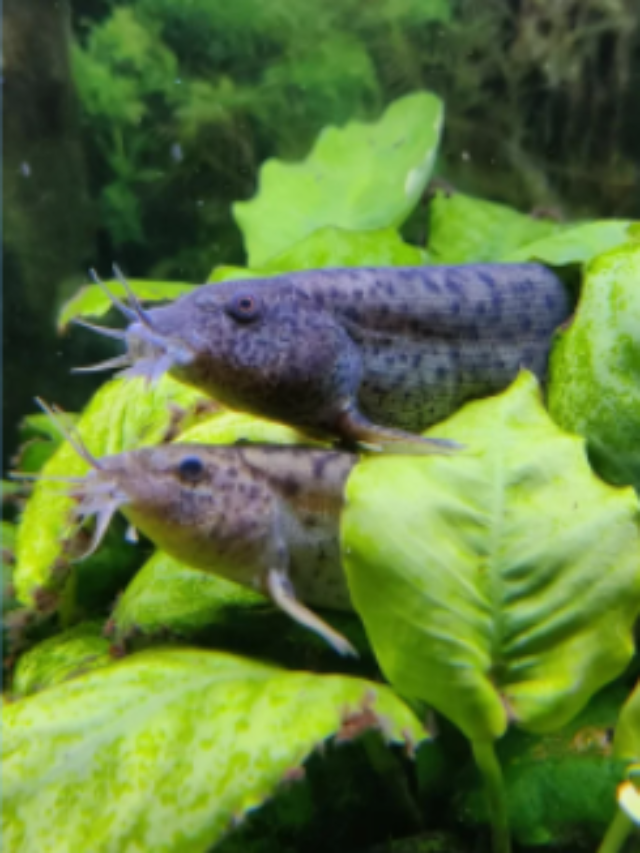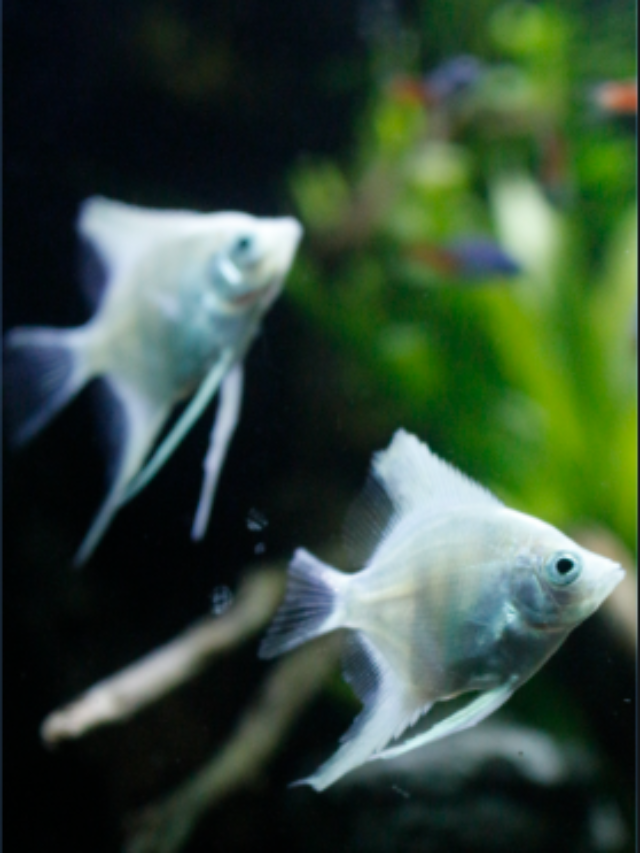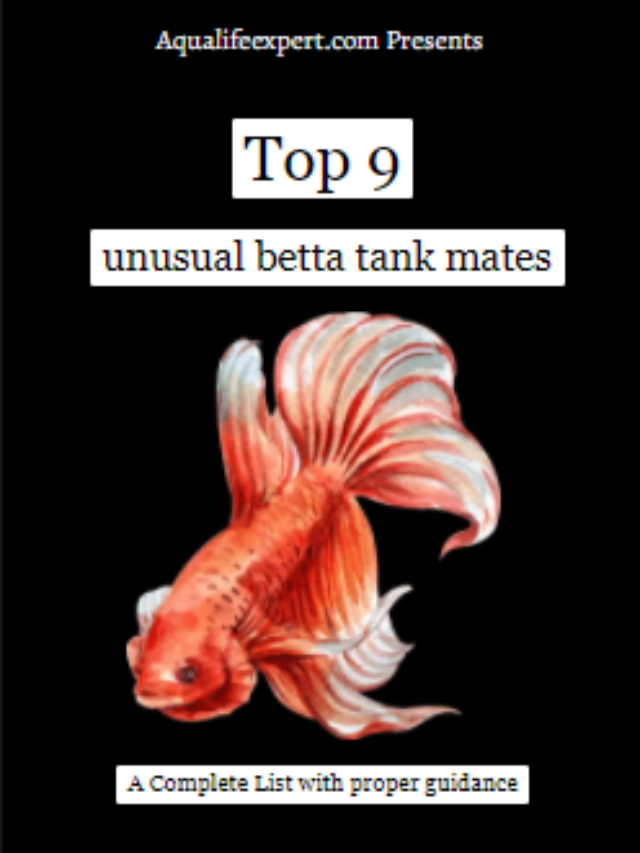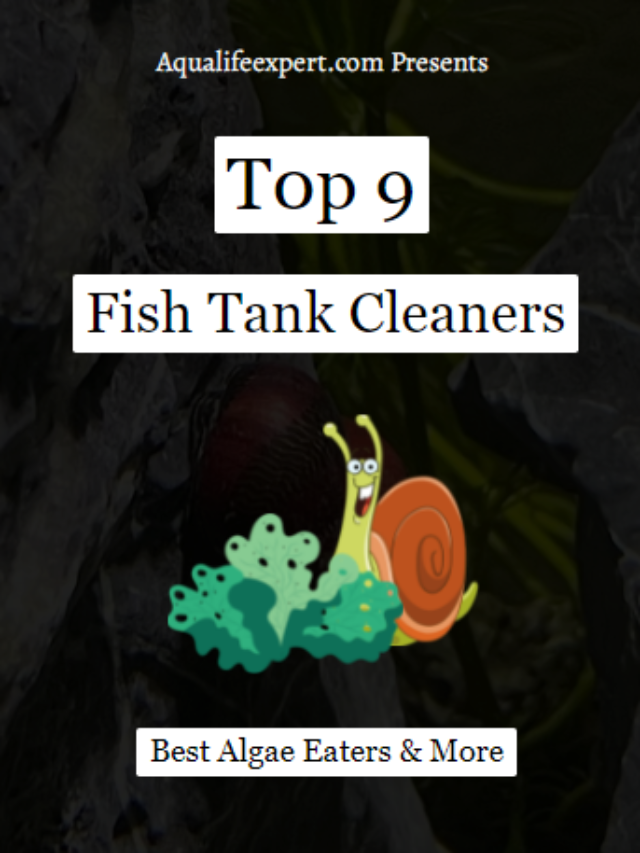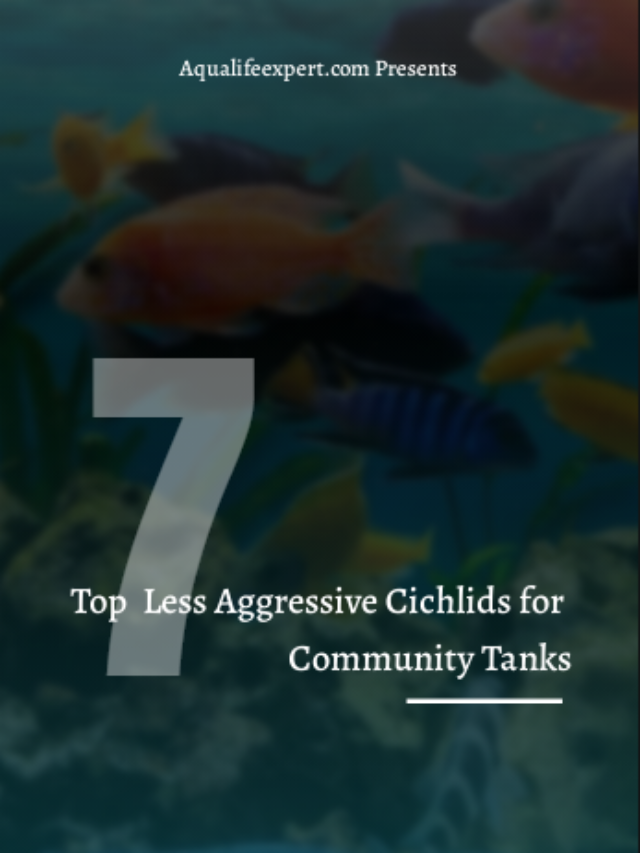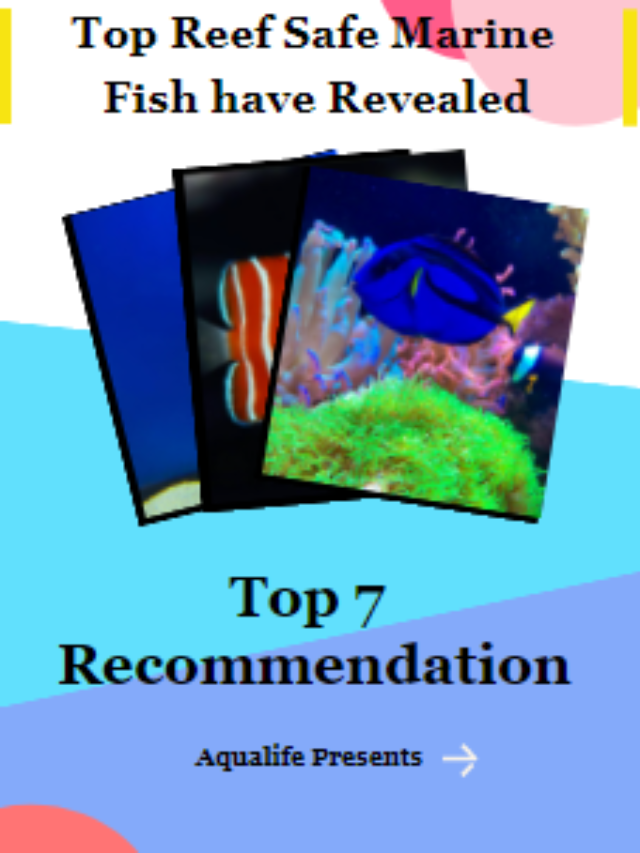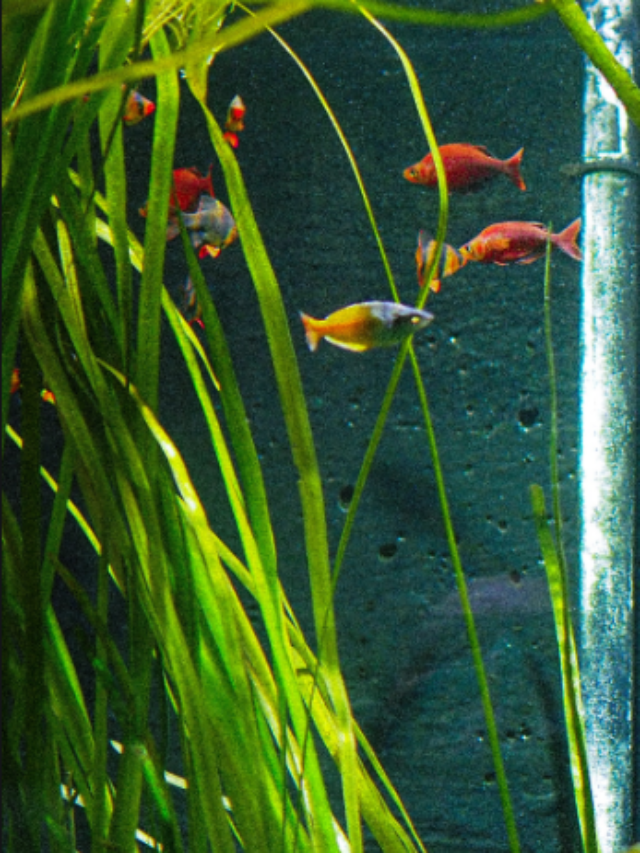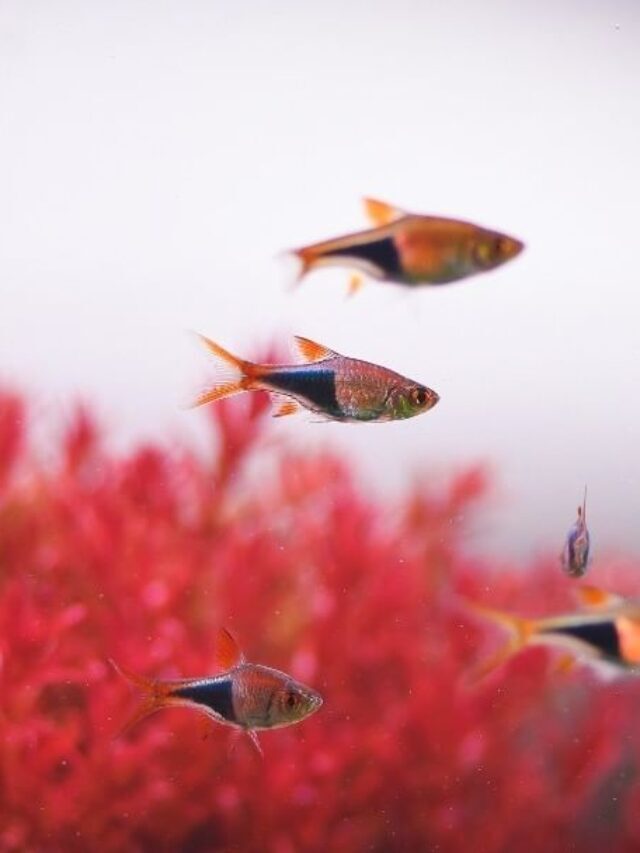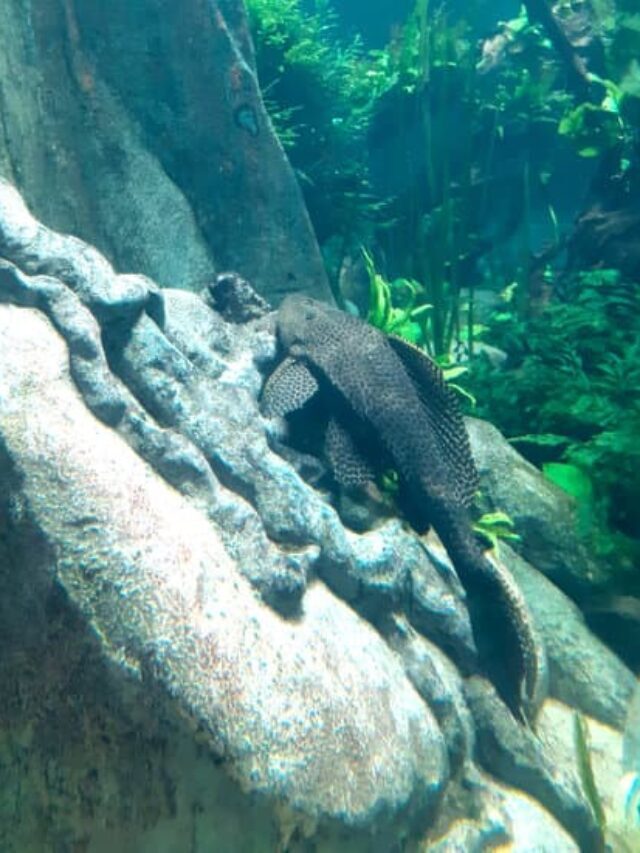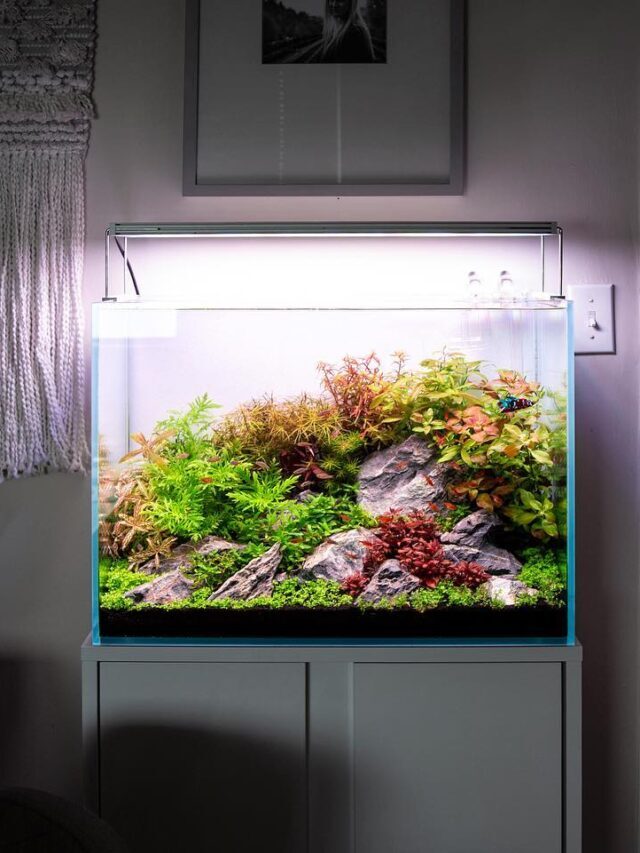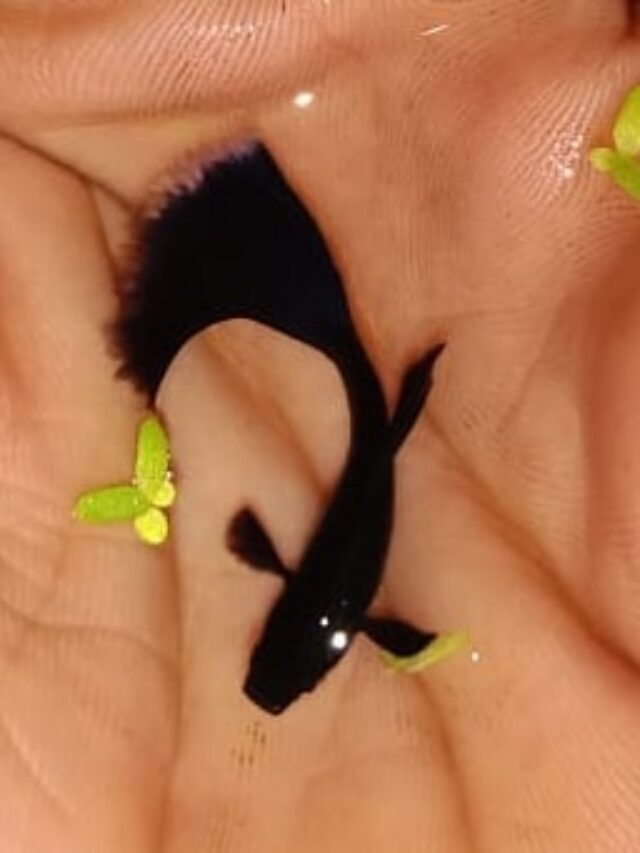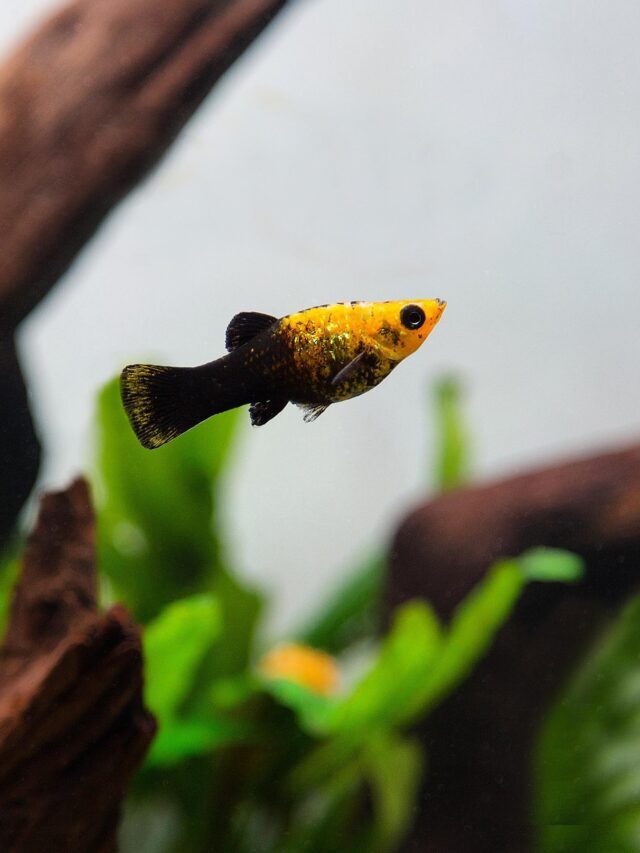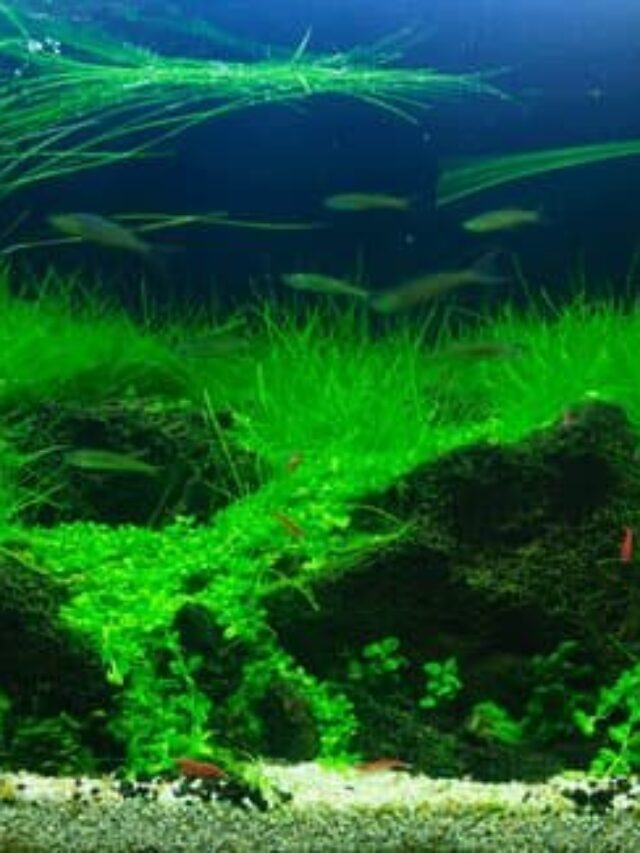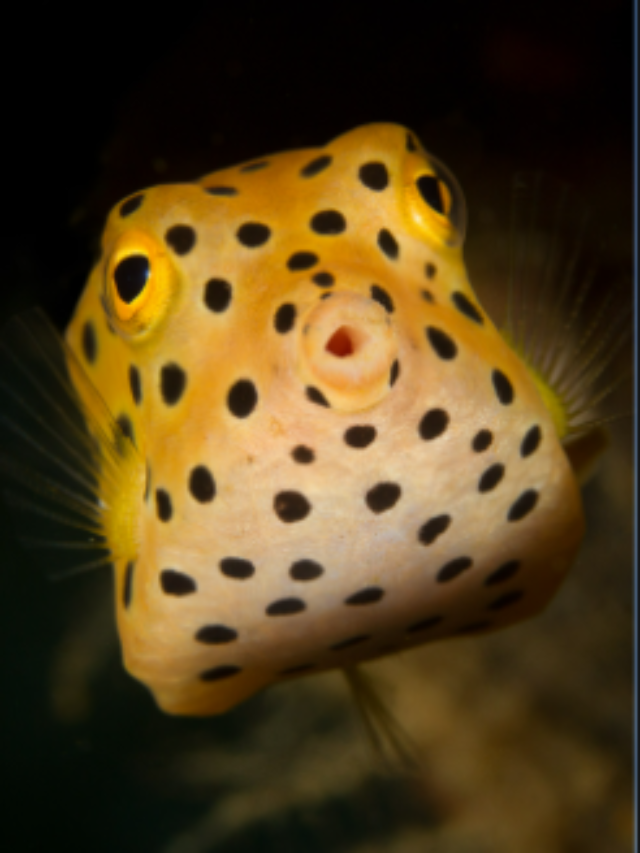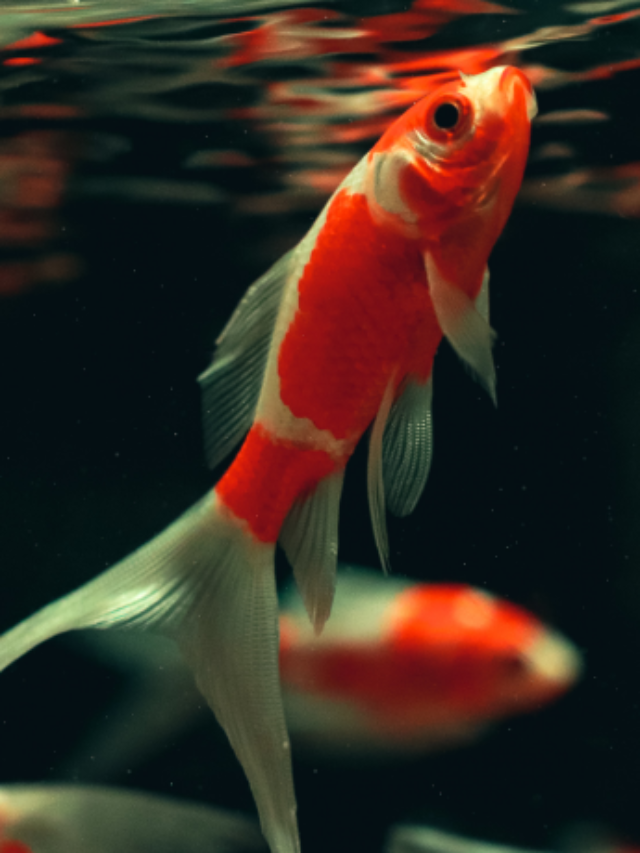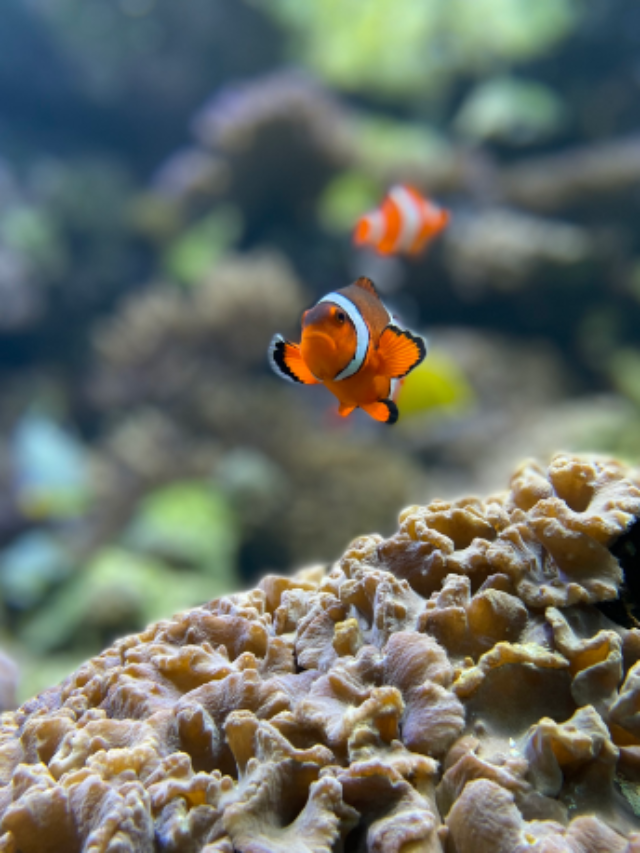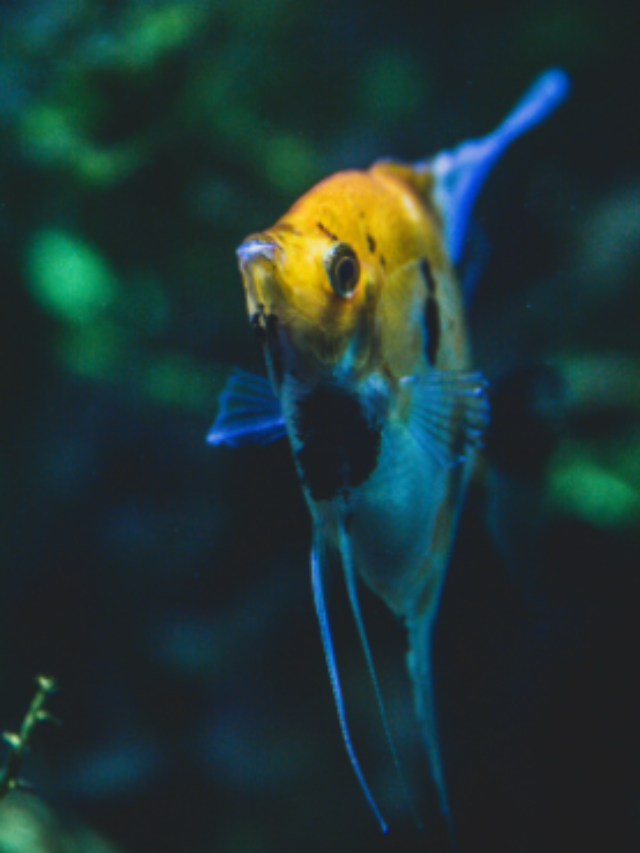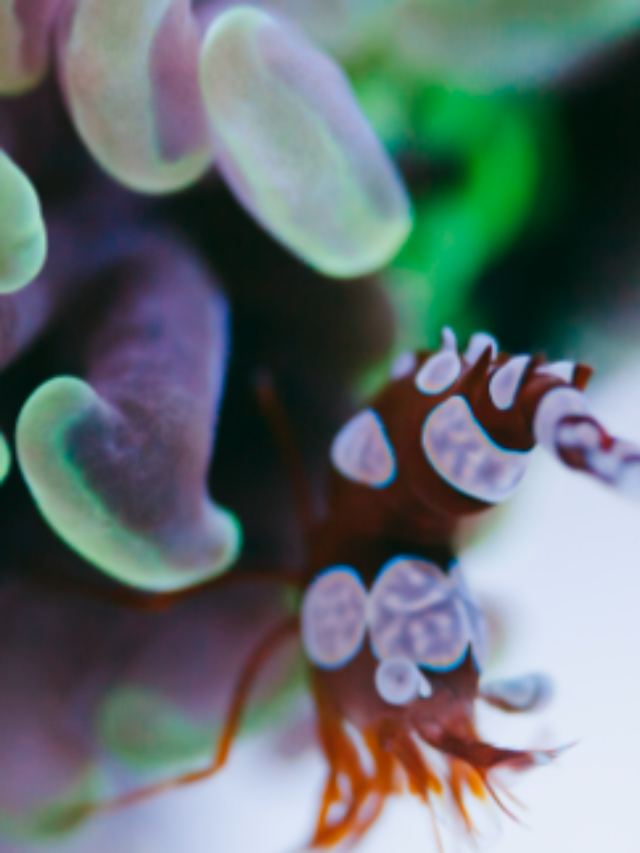10 Types of Pleco Fish: With Pictures & Recommendation
Check Our Quick Stories
Plecostomus are one of the most popular ornamental fish species. They are known as crocodile fish in some countries. The flat body shape of these fish makes them unique among aquarists.
In the world, various types of plecostomus are available there. This article will discuss the most common of them. You can choose from this list for your tank. So without wasting time let’s start to know about 10 different types of pleco fish.
10 Types of Pleco Fish for A Freshwater Aquarium
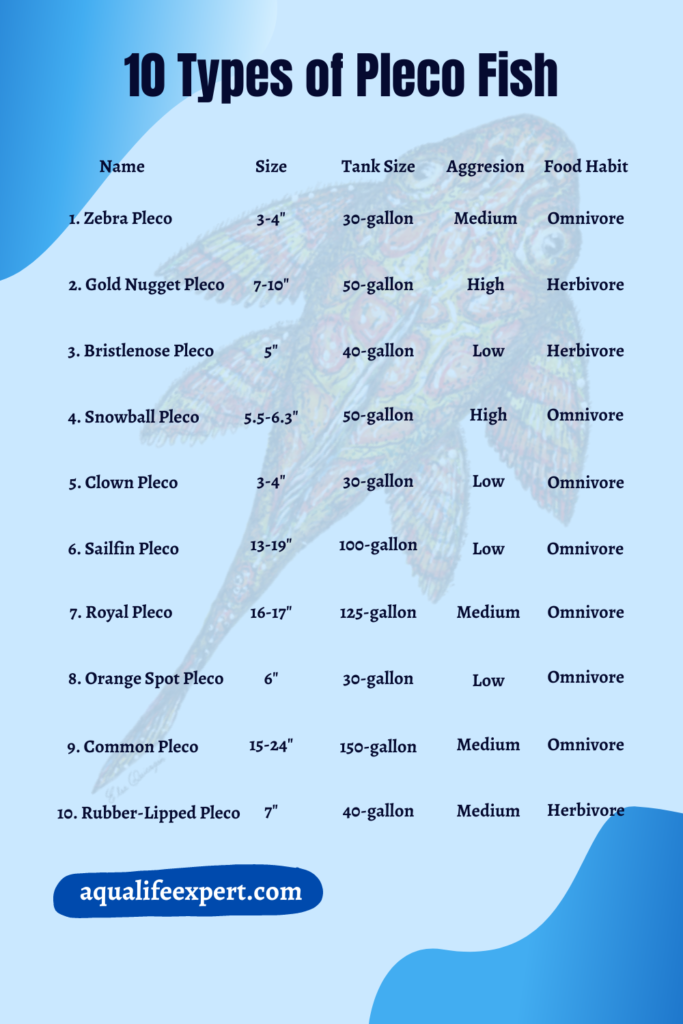
Read More:- How Fast Do Pleco Fish Grow in Aquariums: Comparison with CHARTS and GRAPH
1. Zebra Plecostomus

Zebra pleco is one of the most expensive pleco fish in the fishkeeping hobby. The black and white stripes on its body resemble a zebra. This fish grows not more than 3 to 4 inches.
Zebra Plecos can be stored in the community fish tank. However, you should want to pick their tank mates perfectly. They are very docile and shy. It’s now no longer unusual to look at those fish hiding out in caves to escape from the ruckus of different fish.
The care level of zebra pleco is very easy. You must prioritize their fitness while making plans for their habitat and diet in captivity. To keep them healthy, try to provide great quality water.
2. Gold Nugget Plecostomus

The appearance of gold nugget plecos is completely black with ample small yellow spots. These spots cover their whole body. These spots are lightly spaced and kind of equal length all around.
Mainly we see four types of gold nugget pleco. These are L017, L069, L071, and L17 respectively. Of these, L061 has the smallest yellow spot and L17 has the largest on their body. The head of male gold nugget pleco fish is flatter compared to females. This way you can determine the gender of the gold nugget pleco just by looking at it.
These fish can grow up to 10 inches long so large aquariums are required to keep them. This pleco fish is highly territorial so it needs ample space under the tank. The length of the tank needs to be greater than the height.
This fish produces a lot of bioloads so it requires an as large aquarium as possible. There must be tons of driftwoods in it which helps to create algae. These are one of the favorite foods of the gold nugget fish.
3. Bristlenose Plecostomus

Bristlenose pleco is one of the most common of all pleco fish species. Many fish keepers keep these fish in their aquariums. They are famous for eating algae in aquariums. Besides this, many people like them because of their calm nature.
The appearance of this fish is not as colorful as others. However, you can get them in green, grey, black, or brown in color. The mouth of bristlenose Plecos is placed at the bottom of their bodies. It actually helps these fish to find & eat food quickly.
Bristlenose pleco attains only 5 inches in length in their adulthood. It tells us how small this catfish is. However, a minimum 40-gallon tank is mandatory for this fish.
This plecostomus is nocturnal and they need lots of driftwoods in the aquarium. They thrive in environments with warmer temperatures, mild water flow, and lots of oxygen.
Read More:- Does pleco fish eat driftwood? Advantages of driftwood in aquarium
4. Snowball Plecostomus
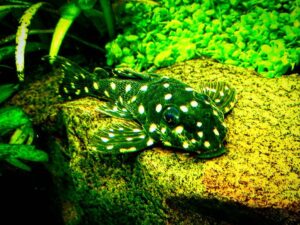
Snowball plecostomus is another cool type of pleco species. They are mainly famous for their appearance. However, unlike common plecos, they grow only 5-6 inches long. So they are quite easy to keep in a 40-gallon tank.
Snowball plecostomus appear with a black or grey body color with white polka dots on it. These dots make them eye-catching and elegant ornamental fish. They can be kept with other peaceful and docile fish in the same tank together.
Like bristlenose pleco, snowball plecostomus is also a nocturnal species. However, they can be active during the daytime too. It depends on the tank decoration. Plenty of driftwoods, caves, rocks, etc. are required for them to lower the aggression level.
5. Clown Pleco

Clown plecostomus is another one of the smallest pleco species. They grow approximately 3.5 inches long which is quite small compared to other plecos. To keep this species, only a 20-gallon tank is enough.
Clown plecostomus are famous for their stunning appearance. They appear in black color with yellow or white stripes along or across the body. They have a large pectoral fin that signifies clown pleco very well.
This fish lives for a very long time like others. In the wild 10-12 years of lifespan is quite common for them. However, in captivity, it is not always possible. If you provide them proper care then it may extend a lot.
6. Sailfin Plecos
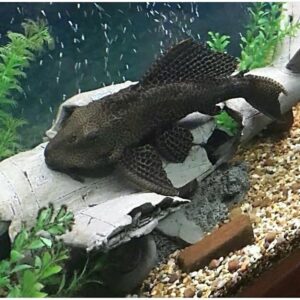
Sailfin plecostomus is one of the biggest among all pleco species. They grow up to 13-19 inches long when they attain adulthood. They are one of the best algae eaters in the aquarium. However, any type of aquarium can’t keep them.
Sailfin plecostomus needs at least 100-gallon of the tank to thrive. Lots of aquarists try to keep juvenile sailfin pleco in much smaller tanks. It is not a good approach just because of their quick growth rate.
This fish is hardy enough to keep in captivity. Unlike clown plecos or zebra plecos, they don’t require high maintenance. If every parameter is okay then sailfin plecostomus can live for a long time (approximately 10-20 years of range)
Like other big-sized pleco fish, sailfin pleco can be aggressive enough if they don’t get a proper environment. So it is recommended for beginners not to keep sailfin pleco initially.
7. Royal Plecostomus
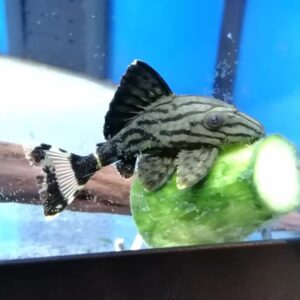
Royal plecostomus is another giant pleco species like sailfin plecostomus. They also grow up to 16-17 inches long, which is huge for captivity.
The appearance of the royal plecostomus is quite impressive. They aren’t the brightest ones. However, they appear in grey colors and a variety of patterns. They have a prominent dorsal fin. The body shape of these fish resembles that they are very strong.
Royal plecostomus live up to 10 years longer if they are taken care of properly. They grow quite quickly, even if not like sailfin plecostomus. So it is better to start with a large aquarium (at least 120-gallon) for them.
To keep the royal plecostomus healthy, always try to keep the environment natural. Plenty of hiding places, river rocks, and caves are mandatory to have in the tank. As they are tropical fish, they can’t live in cold water.
8. Orange Spot Plecostomus
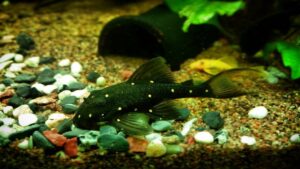
Orange spot plecostomus are kinda rare among the fishkeepers. It is because the price of this fish is higher compared to other plecos in the market. This fish is known for their appearance basically.
Orange spot plecostomus grow up to 5 inches long, which is small compared to those giant plecos discussed before. To keep this fish you don’t need a huge aquarium. A 40-gallon tank is enough for them to be healthy and happy.
To keep this fish you must check the tank decoration well. This fish prefers bogwood in their captivity. The upper coating of bogwood is one of the main foods for them. Orange spot plecostomus are nourished by this.
Furthermore, you can provide them with sweet potatoes, cucumber, and squash as foods. They are good scavengers. They love to consume algae as well.
9. Common Plecostomus

Sometimes fish hobbyists call bristlenose pleco as a common plecostomus. However, it isn’t true. Common pleco is different species and grows very big. It grows up to 24 inches when they attain adulthood.
Common pleco fish is very popular worldwide. They appear in dark brown color with black patterns. Common pleco act as a docile and peaceful fish during the juvenile condition. However, it becomes aggressive when they attain adulthood. So don’t keep them with improper tank mates on a small tank.
Common pleco prefers to live in medium to high water current. So try to imitate this in captivity. Add plenty of driftwoods, caves, and rocks inside the aquarium.
A planted aquarium isn’t good for common pleco because of their plants’ ripping behavior. However, you can add some deep-rooted plants i.e. java fern or anubias to create some shady areas.
10. Rubber-Lipped Plecostomus
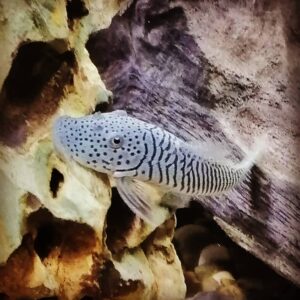
Rubber-lipped pleco is another most common type of pleco species. They are found in South America mainly. They are mainly known for their territorial nature.
Rubber-lipped pleco is very hardy and can tolerate a wide range of water parameters. Despite this fact, you should not keep adult rubber-lipped pleco with any type of peaceful fish together. Juvenile rubber-lipped may not create problems though.
Unlike other plecos, to keep rubber-lipped pleco healthy and happy you can build a planted tank. They always prefer large rocks and driftwood in aquariums. Try to make plenty of hiding spots with these tank decors.
Thankfully this pleco doesn’t grow like sailfin or royal plecostomus. This is why you can keep them in a comparatively smaller tank. A 30-40 gallon tank is enough for a 7 inches long rubber-lipped pleco.
Read More:- How to Breed Pleco Fish? Tricks what Experts Use
Final Thoughts
This article has discussed the 10 most common types of pleco fish for a freshwater aquarium. Now it’s your call to choose one for your aquarium.
However, if you ask about our recommendation then we can go for bristlenose pleco obviously without any hesitation. They are easy to keep, small in size, and one of the most popular plecos.
Zebra and clown plecos are too small and suitable for smaller tanks. However, zebra plecos are too expensive so they should be purchased according to the weight of the pocket.
Royal & sailfin plecostomus are best for large tanks. If you don’t have enough time to clean the algae from a large aquarium then these plecostomus can work for you as scavengers.
Best of luck and happy fish-keeping.
Read More:- 11 Most Popular Freshwater Aquarium Fish With A Recommendation

